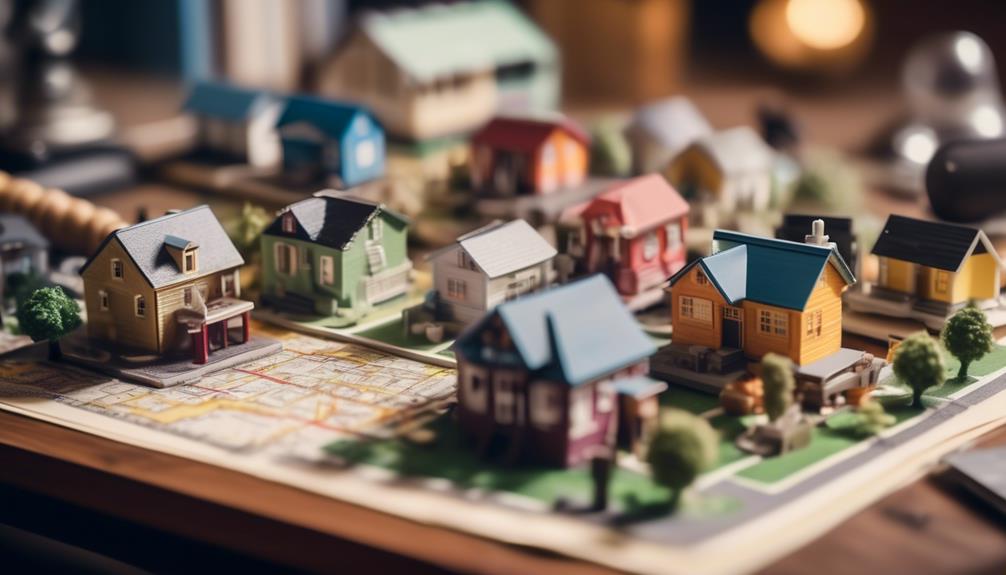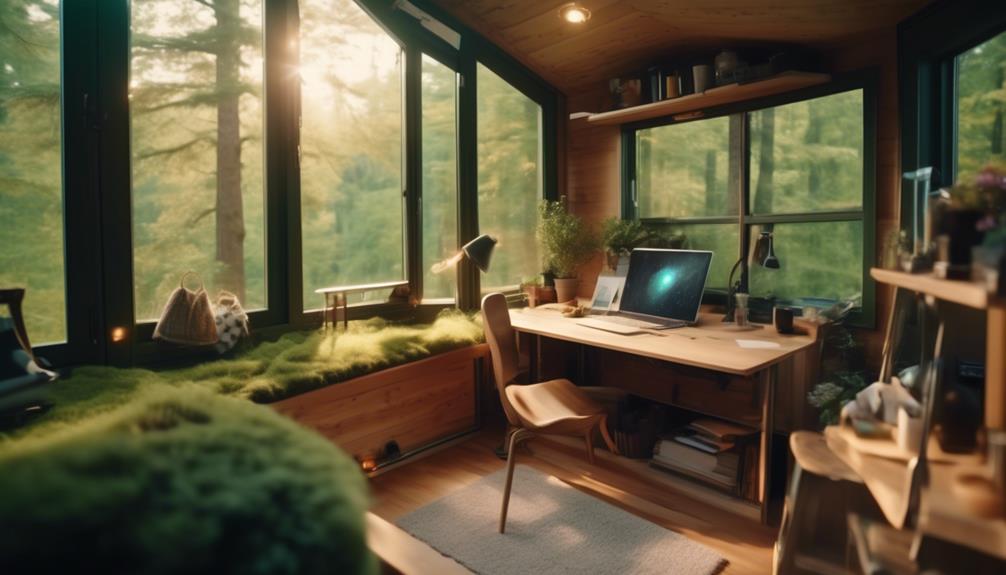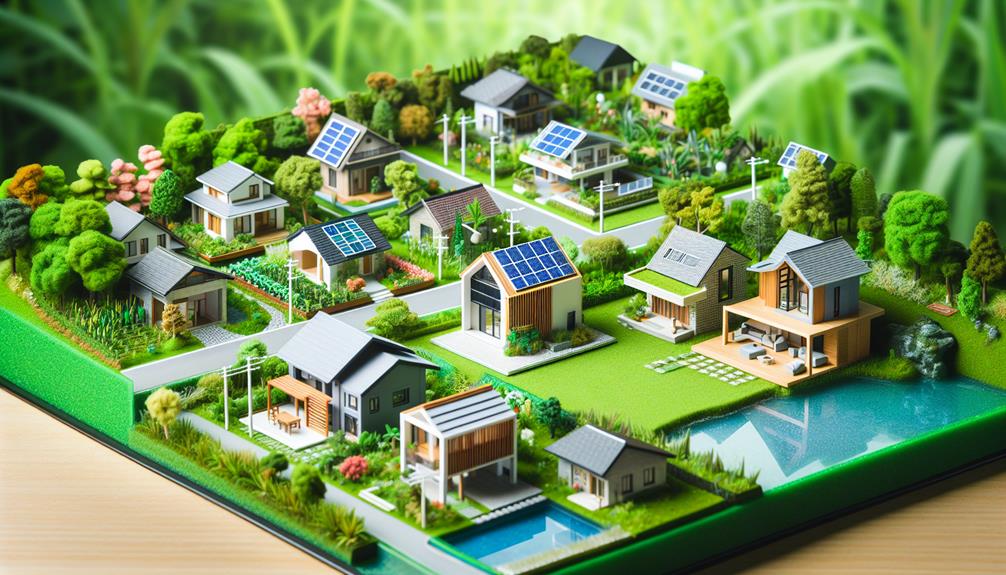You're sizing down your space, simplifying your lifestyle, and slashing your bills; but before you make the leap into tiny home living, you've got to know the ropes.
This comprehensive guide is tailored to help you navigate the complex maze of decisions that come with choosing the right tiny home for you.
As you contemplate the allure of minimalism and mobility, remember that the devil is in the details—from zoning laws to loft heights, and from composting toilets to fold-out decks.
You'll want to weigh the benefits of building your own against the convenience of a pre-fab home, not to mention the financial implications each option presents.
Stick with us as we unpack the intricacies of selecting and settling into your pint-sized palace, ensuring you're well-equipped to make a decision that fits both your dreams and your reality.
Key Takeaways
- Tiny home living offers a unique and efficient approach to housing, with a compact footprint of 400 square feet or less.
- When selecting a tiny home, consider the type (foundation, mobile, DIY kits, or ready-made units) and research local regulations and zoning laws.
- Budgeting is crucial for tiny home ownership, including accounting for transportability costs and clarifying what is included in the sale price.
- Designing a tiny home involves maximizing space with multi-functional furniture, strategic window placement, and eco-friendly materials, while also prioritizing downsizing and decluttering.
Defining Tiny Home Living
Amidst the growing movement towards minimalism and sustainability, tiny home living offers a unique approach to housing with its compact footprint of 400 square feet or less, necessitating innovative design solutions to maximize space.
You're not just choosing a place to live; you're joining the tiny house movement, a shift that embraces efficiency, cost-effectiveness, and a conscious decision to live with less.
Your living space isn't just confined to the ground floor; many tiny homes incorporate a sleeping loft, cleverly expanding the usable area without increasing the foundation size.
As you delve into tiny living, you'll find a range of options from DIY kits to luxurious, ready-made abodes. You must navigate zoning laws, which are often more accommodating in rural settings.
Costs vary, but expect to invest anywhere from $6,800 to $109,500, depending on your customization preferences.
Selecting Your Tiny Home Type
When selecting your tiny home, it's crucial to assess the advantages and constraints of each type, from foundation-based structures to mobile options, ensuring alignment with your lifestyle and legal requirements.
As you embark on buying a tiny house, consider the following:
- Evaluate tiny home types, including foundation, mobile, DIY kits, and ready-made units, weighing their pros and cons.
- Investigate local regulations affecting your tiny home placement and community options.
- Budget for costs ranging from affordable basic models to custom-designed luxury homes.
- Choose between customization for a unique space or existing floor plans for faster occupancy.
Researching builders like Wheelhouse Design Build or CABN helps pinpoint the tiny home type that best fits your innovative vision and practical needs.
Legal Considerations and Zoning

Understanding the types of tiny homes that align with your lifestyle is just the starting point. You'll also need to navigate the complex landscape of legal considerations and zoning laws that govern where and how you can use your tiny home.
Conducting thorough due diligence is paramount to ensuring your tiny home dream doesn't become entangled in legal snags. It's essential to verify which zoning regulations apply to your intended location, as these rules can vary significantly by municipality. Some areas may have progressive policies that encourage tiny living, while others uphold restrictions that could limit your options.
Always reserve the right to consult with a land-use attorney to clarify your Rights Reserved under local laws. Making an informed decision here will safeguard your investment and lifestyle aspirations.
Budgeting for Your Tiny Home
Crafting a meticulous budget is the cornerstone of your journey into tiny home ownership, ensuring that no hidden costs catch you by surprise. When you're budgeting for your tiny home, it's essential to delve into the details and anticipate expenses beyond the sale price. Here's what to keep in mind:
- Transportability: Account for the costs of safely relocating your tiny home, considering its weight and necessary weight distribution.
- Sale Inclusions: Clarify what the tiny house builder includes in the sale price—don't assume furniture, appliances, or fittings are part of the package.
- Trial Period: Before you buy a tiny home, it might be wise to test the lifestyle. Budget for a tiny home rental experience.
- Non-Negotiables: Create a checklist of must-have features and strictly adhere to it to avoid overspending on unnecessary extras.
Tiny Home Design Features

Maximizing every square inch is crucial in tiny home design, where multi-functional furniture and innovative storage solutions turn limited space into comfortable living areas.
When you build a tiny house, strategic placement of windows enhances natural light, making the space feel larger and more inviting.
Loft spaces serve dual purposes—providing a cozy sleeping area overhead while freeing up floor space for daily activities.
In your pursuit of tiny home design features, consider the importance of sustainability. Opt for eco-friendly materials and finishes that not only reduce your environmental footprint but also promote healthier living.
Attention to these details ensures your tiny house remains both functional and aesthetically pleasing, reflecting a commitment to innovative, efficient living.
Transitioning to Tiny Living
As you transition to tiny living, you'll need to prioritize downsizing essentials to make the most of limited space. Mastering the art of maximizing small spaces is critical; every item in your tiny home must have a purpose or multiple functions.
Thoroughly research zoning laws and cost factors to ensure your tiny home life is both legal and financially feasible.
Downsizing Essentials
When transitioning to tiny living, you'll need to prioritize downsizing essentials, harnessing space-saving solutions that streamline your lifestyle without sacrificing comfort or functionality. To ensure you make the most out of your space in a tiny home, consider the following:
- Evaluate Possessions: Scrutinize every item for its utility and value. If it doesn't serve a purpose or bring joy, it's time to let it go.
- Multi-Functional Furniture: Invest in pieces that serve multiple purposes, such as a sofa that converts into a bed or tables with hidden storage.
- Vertical Space Usage: Maximize vertical spaces with lofted beds or high shelving, opening up the floor plan.
- Digitalization: Transition to digital media and documents to minimize physical storage needs.
Maximizing Small Spaces
Leveraging multi-functional furniture is a cornerstone of tiny home living, allowing you to save space while maintaining a high degree of functionality. When you're transitioning to a tiny house, every inch counts, so it's essential to be strategic. Beyond multi-use furniture, implement smart storage like built-in shelving and under-bed compartments. Embrace minimalism; every item in your tiny home should have a purpose and a place.
Open-concept layouts and natural light can give the illusion of spaciousness, enhancing your tiny living experience. Consider modular furniture that can be reconfigured for different uses, ensuring your space adapts to your lifestyle. Here's a quick guide to help you maximize small spaces efficiently:
| Multi-Functional Piece | Storage Solution | Design Technique |
|---|---|---|
| Convertible sofa-bed | Built-in shelves | Open-concept layout |
| Drop-leaf table | Under-bed containers | Large windows for light |
| Modular shelving | Wall-mounted organizers | Light colors to expand space |
Frequently Asked Questions
What Is a Good Budget for a Tiny House?
You'll need a budget that factors in size considerations, custom features, land costs, and off-grid options. Typically, $25,000 to $75,000 should cover it, but prices can vary widely with customization.
Who Typically Buys Tiny Houses?
You're likely a minimalist, an eco-conscious individual, a downsizing senior, or a nomadic worker if you're eyeing tiny houses as they cater to those craving innovation in sustainable living and financial freedom.
Is It Worth It to Invest in a Tiny House?
Investing in a tiny house can symbolize your commitment to sustainable living, embracing a minimalist lifestyle with space efficiency, and enjoying mobility benefits. Analyze costs and features carefully to ensure it aligns with your values.
Are Tiny Houses Hard to Sell?
You'll find that tiny houses have selling challenges due to a limited market niche, potentially lower resale value, and location constraints, which are vital to consider for a successful and innovative investment.
Conclusion
As you stand on the threshold of tiny living, remember it's not just about downsizing space—it's about upsizing quality of life.
Your journey to a minimalist haven requires a keen eye for detail and a firm grasp on the reins of budget and design.
Let this guide be your compass, pointing you toward a lifestyle where less is indeed more.
Embrace the simplicity, cherish the savings, and step boldly into your snug, new abode.

